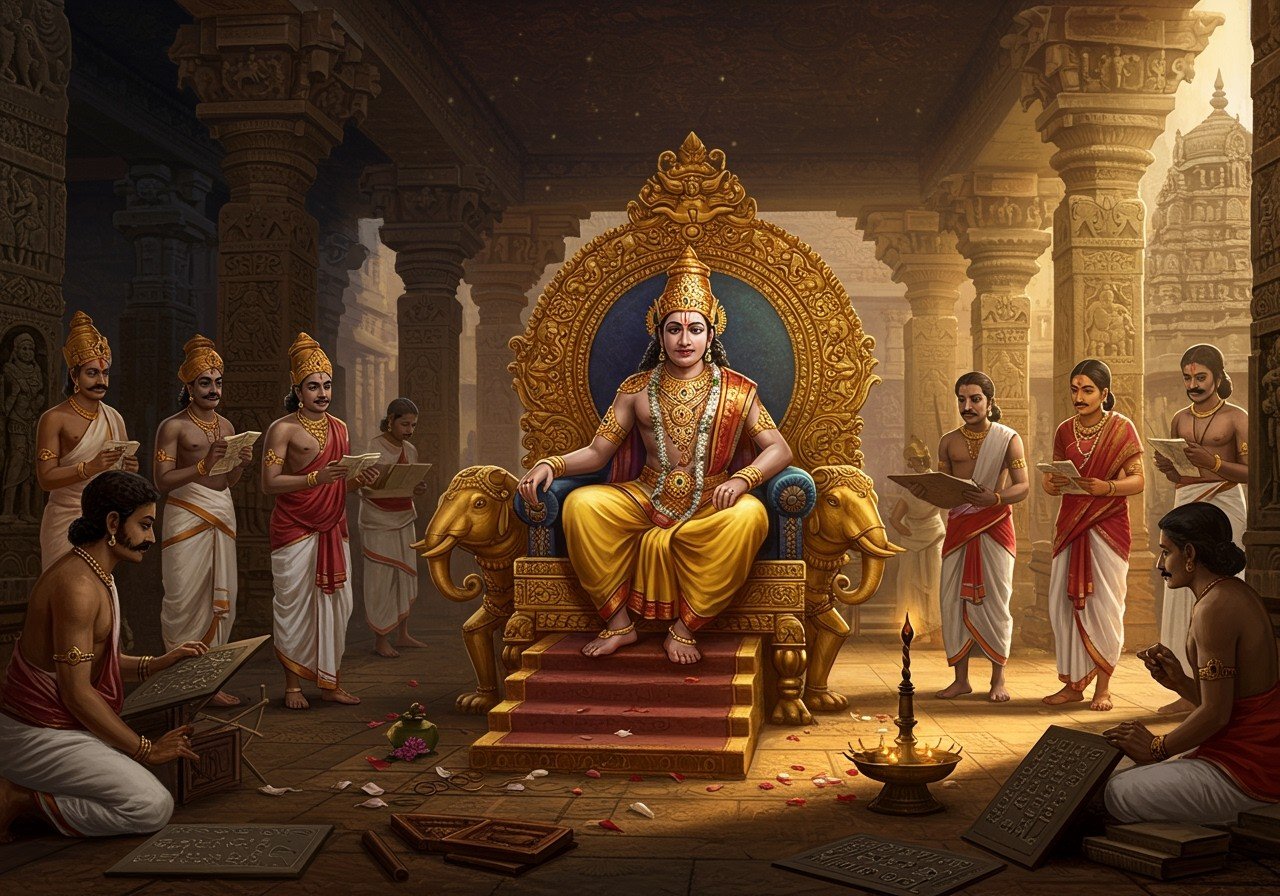
The Western Ganga Dynasty, a prominent power in ancient Karnataka, India, reigned from approximately 350 to 999 CE. Their rule is marked by sophisticated administration, a rich linguistic heritage, and lasting cultural contributions. Explore the intricacies of their governance and the significant role language played in shaping their legacy.
Historical Overview
Emerging in present-day Karnataka, the Western Ganga Dynasty was established by Konganivarma Madhava. Key cities like Kolar and Talakad served as important administrative centers. The dynasty’s socio-political strategies were deeply influenced by the prevailing landscape of the time. For a deeper dive into the historical significance of temples in this region, explore resources like Kandariya Mahadeva Temple: Religious Importance and History and Khajuraho and Kandariya Mahadeva: A Cultural Heritage Journey.
Administrative Structure
The Western Ganga administration was highly organized, incorporating provinces, districts, and designated officials. These included:
- Mahasamanta: These officials were entrusted with the management of large regions, demonstrating the hierarchical structure of the administration.
- Mahadandanayaka: Responsible for upholding law and order, these officials played a critical role in maintaining stability within the kingdom and ensuring the smooth functioning of society.
- Local Administrators: A network of local administrators handled smaller regions, ensuring governance reached all corners of the kingdom.
Inscriptions, documents, and even religious institutions played a vital role in administrative affairs. The tax system, designed for efficient revenue collection, ensured economic stability. Poojn.in offers a wide selection of puja items, reflecting the continued importance of religious practices, much like during the Western Ganga era. Explore our collection of Lord Shiva Murtis.
Language and Governance
Kannada and Sanskrit were the cornerstones of administration. Kannada featured prominently in official documents and inscriptions, while Sanskrit, a language of scholarly and religious significance, played a complementary role. Jainism and Buddhism also influenced the literary landscape. The interplay of these languages facilitated communication and governance across the diverse regions under Western Ganga rule. Discover more about the significance of Sanskrit mantras with Poojn.in’s Sanskrit Mantras: A Spiritual Language Guide.
Cultural Legacy
The Western Ganga Dynasty left an indelible mark on art, architecture, and literature. Temples and sculptures stand as testaments to their artistic achievements. Their patronage of the arts contributed significantly to Kannada culture. This heritage is preserved through inscriptions and monuments, showcasing the dynasty’s enduring influence on subsequent rulers and regions. Modern Karnataka continues to be shaped by these cultural and administrative practices. Poojn.in celebrates this rich cultural heritage by offering a diverse range of traditional items. Explore our selection of camphor, an essential element in many traditional ceremonies.
Capital Cities: Kolar and Talakad
Kolar and Talakad, the prominent capitals, played pivotal roles in administration. Archaeological findings and historical landmarks underscore their significance. Well-planned infrastructure and urban design facilitated effective governance. Learn more about the architectural marvels of ancient India with Poojn.in’s guides on Sas-Bahu Temples.
Decline of the Dynasty
The reign of Rakkasa Ganga, the last king, was marked by external pressures and internal conflicts, ultimately leading to the dynasty’s decline. The transition of power paved the way for successor states. The legacy of the last ruler and the impact of the dynasty’s fall offer valuable insights into the region’s historical trajectory. Explore Poojn.in’s resources on Chhinnamasta Devi for further exploration of religious figures and traditions in Indian history.
FAQs
What was the Western Ganga Dynasty’s administrative structure? The Western Ganga Dynasty employed a hierarchical administrative system with provinces, districts, and designated officials like the Mahasamanta and Mahadandanayaka.
How did the Western Ganga Dynasty’s use of language impact their rule? The use of Kannada and Sanskrit in administration facilitated communication and governance across diverse regions, contributing to the dynasty’s unity and stability.


